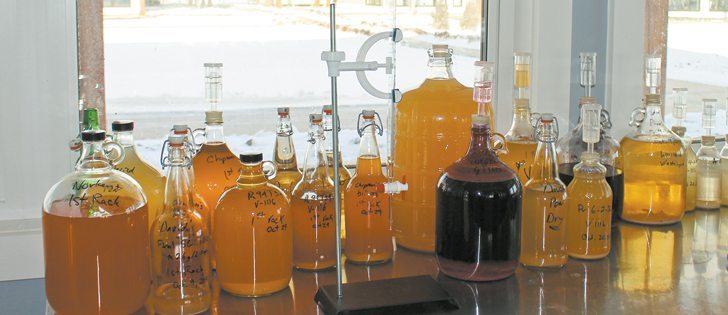The craft alcohol industry in Saskatchewan is taking off, and cider production is a growing part of it.
“Over the last decade, cider production, cider consumption in North America has gone up dramatically,” said Tyler Kaban, head cider maker at the Crossmount Cider Co. near Saskatoon.
The Prairies have been known for catching onto alcohol trends later than other places, he added.
The increased cider popularity will increase demand for Saskatchewan-grown fruit and other crops to make the alcohol.
A hindrance to the growing industry has been the Saskatchewan government’s regulations regarding the craft liquor industry.
Read Also

VIDEO: Case IH reveals new Optum tractor at Agritechnica 2025
Case IH reveals its new Optum tractor at Agritechnica 2025.
Cideries are covered under the Saskatchewan Liquor and Gaming Authority’s cottage winery rules, which state that they are allowed to produce 45,000 litres of alcohol per year. However, this may change.
The provincial government launched an independent review of the craft alcohol industry this year.
An SLGA spokesperson said the review is nearing completion, and a report will be submitted to the government for consideration soon. It’s response is expected to be released early next year.
Sue Echlin, owner of Living Sky Winery near Perdue, Sask., hopes the legislation will be updated.
The company started making cider as well as wine a few years ago.
However, it was forced to stop making cider last year after discovering that it couldn’t produce enough under the legislation to make a profit after production costs.
It resumed production this year in small batches, packaging it in growlers (large jugs) instead of bottles.
“It looks like there might be some changes to the cottage winery policy coming that will allow us to sort of make more cider, but in the interim, we’re just going to make small, really artisanal, limited batches,” Echlin said.
She sees room for growth in the province’s craft alcohol industry.
“It makes great sense that in this province, that grows so much, that we can have the opportunity to expand our abilities to make those raw products into great drinkable products.”
The Crossmount Cider Co., which is just getting up and running, has its own orchards.
It recently installed its cider making equipment and will begin production with sales to start in spring. The first batches will use apples from British Columbia.
Crossmount has a close association with the University of Sask-atchewan’s apple breeding program and is growing and testing varieties of apples from the university for cider production.
“The type of work, collaboration, that we’re doing with them will really lead to higher quality products and very unique products in this part of the world, or anywhere in the world, because we’re actually using seedlings of theirs, some of them are not even named yet,” Kaban said.
He said the province’s cottage winery policy doesn’t restrict his operation because it has not started selling products yet. He doesn’t yet know the exact details about how much cider it will be able to produce and sell.
“Ideally, we would like to be able to go beyond that 45,000 litre mark so we can actually sell off site and create more awareness for the product,” Kaban said.
The SLGA said five cottage wineries are licensed in the province.















